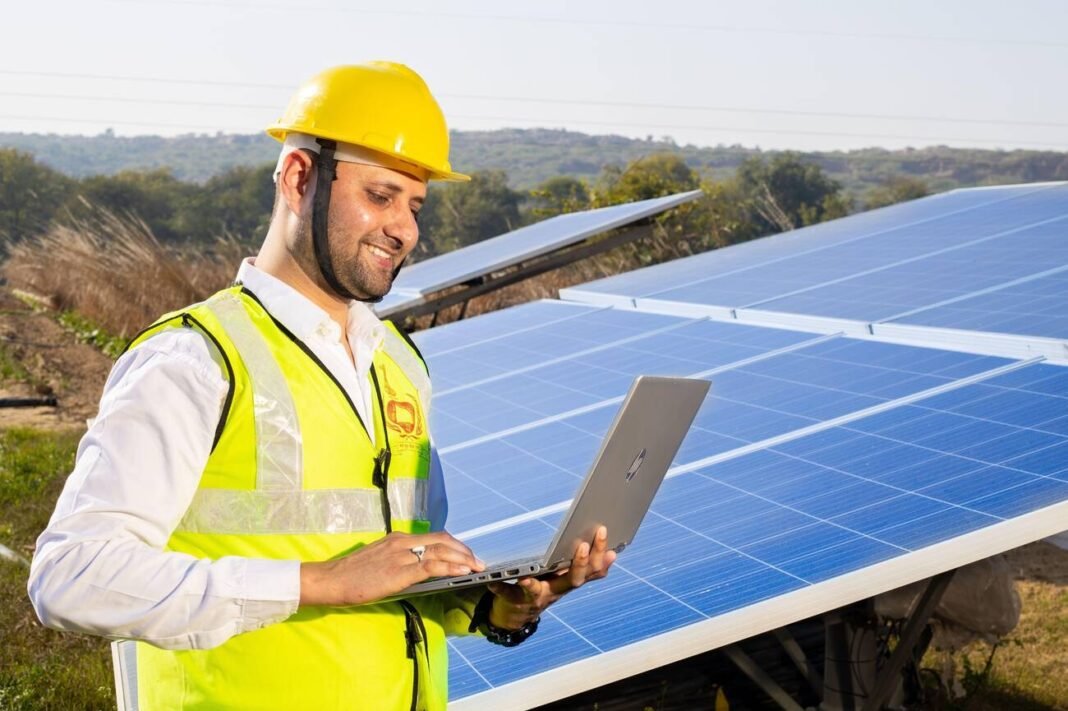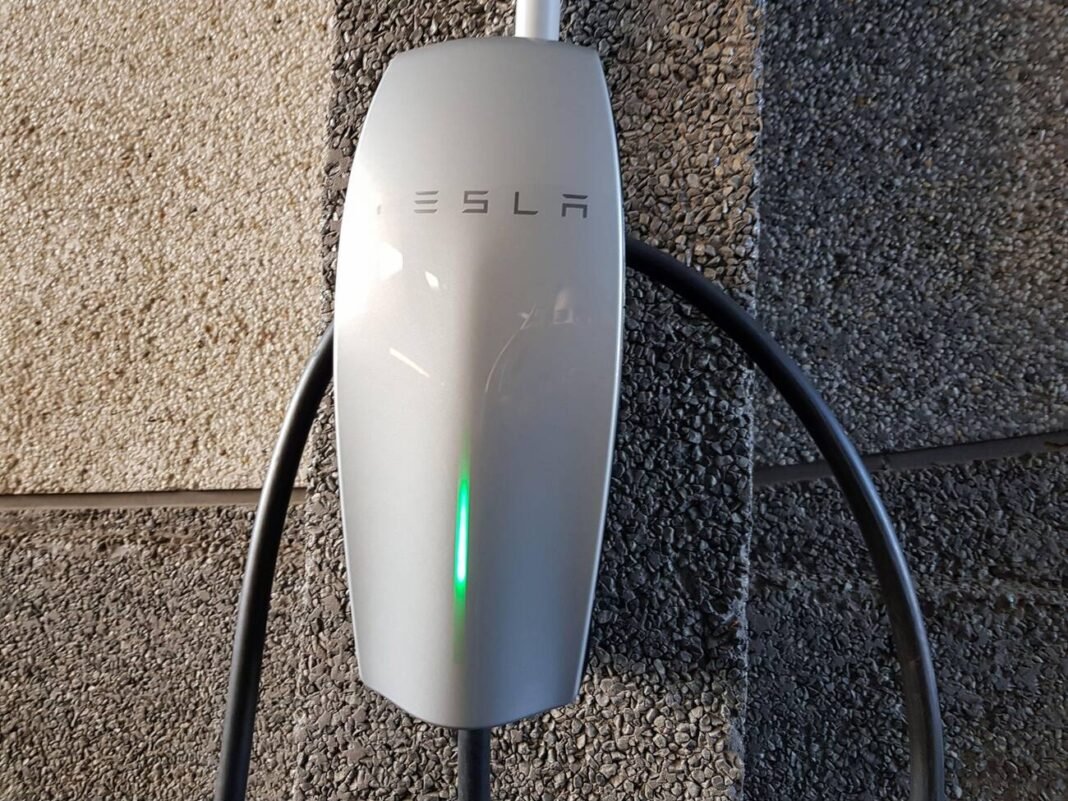In recent years, Solar system installation has emerged as a leading choice for homeowners looking to harness the power of solar energy, a renewable and sustainable source of electricity. Leveraging the photovoltaic (PV) effect, solar panels capture energy from the sun and convert it into usable electricity, showcasing the efficiency and eco-friendliness of this green energy solution. The increasing interest in solar energy reflects a global shift towards more sustainable living practices and the desire to reduce reliance on traditional fossil fuels.
As we move into 2024, the landscape of Solar system installation continues to evolve, presenting homeowners with new opportunities and considerations. This article will guide readers through the essentials of solar system components, assessing a home for solar potential, planning and sizing the system, and understanding the intricacies of permits and incentives. Additionally, it will explore the pros and cons of DIY versus professional installation and offer insights into maintenance and efficiency optimization, providing a comprehensive overview for anyone considering solar energy for their home.
Understanding Solar System Installation Components
Key Components of a Solar Panel System
- Solar Panels
- Type and Efficiency: High-quality monocrystalline panels are preferred for their superior sunlight conversion rates and power output. Brands like Panasonic, SunPower, and REC are noted for their efficiency and robust warranties.
- Material: Made primarily of silicon, a semiconductor that plays a crucial role in the photovoltaic effect where sunlight excites electrons, creating an electric current.
- Solar Inverter
- Function: Converts the DC electricity generated by solar panels into AC electricity, which is usable in home appliances.
- Types: Central inverters and microinverters are the most common, with choices depending on the size and configuration of the solar installation.
- Mounting and Racking Equipment
- Purpose: Securely positions solar panels on roofs or the ground. Ideal installation angles vary between 15 and 40 degrees to maximize sun exposure.
- Battery Storage (Optional)
- Usage: Stores excess electricity for use during power outages or periods of low solar production. Essential for off-grid systems and beneficial for hybrid systems.
- Metering
- Net Metering: Allows homeowners to send excess electricity back to the grid in exchange for credits, reducing overall electricity costs.
- Additional Technologies
- Building-Integrated Photovoltaics (BIPV): Offers a seamless aesthetic integration by matching the solar panels to the surroundings of the building.
- Community Solar Projects: An alternative for those unable to install individual systems, allowing multiple individuals to benefit from a single, shared solar system.
System Types and Their Configurations
- Grid-Tied Systems: Connect to the public electricity grid, do not have battery storage, and utilize net metering.
- Hybrid Systems: Similar to grid-tied but include battery storage for added energy independence.
- Off-Grid Systems: Completely independent from the utility grid, requiring sufficient battery capacity to manage all energy needs.
Tools and Resources for Planning
- PVWatts Calculator: Developed by NREL, this tool estimates potential energy production and cost savings for grid-connected PV systems.
- Online Mapping Services: Help in assessing roof suitability for solar installations by analyzing factors such as orientation, tilt, and shading.
By understanding these components and their functions, homeowners can make informed decisions about configuring their solar panel system to maximize efficiency and meet specific energy needs.
Assessing Your Home for Solar
Step-by-Step Guide to Assessing Your Home for Solar Installation
- Evaluate Roof Orientation and Slope
- Determine if your roof faces south, which is ideal for solar panel placement.
- Check that the slope of your roof is between 30 and 45 degrees to maximize sun exposure.
- Check for Shading and Space Availability
- Assess the amount of shading your roof receives throughout the day. Minimal to no shading is preferable.
- Ensure there is sufficient unobstructed space on your roof for the number of panels you need.
- Roof Condition and Suitability
- Inspect the condition of your roof. A roof in good condition is crucial for supporting solar panels.
- Consider the size and material of your roof as they affect the type and size of the solar system you can install.
- Local Climate and Solar Potential
- Understand that solar panels can operate in various climates, but local weather conditions can influence efficiency.
- Use tools like Google’s Project Sunroof or the PVWatts Calculator to estimate the solar potential of your home.
- Community Solar and Alternative Options
- If your home isn’t suitable for solar panels, explore community solar projects which allow multiple households to benefit from a single, shared solar system.
- Professional Assessment
- Engage a certified solar installer to conduct a thorough site assessment. This professional evaluation can provide a detailed analysis of your home’s solar potential, including precise estimates of the necessary number of panels and potential installation costs.
By following these steps, homeowners can effectively determine the suitability of their home for solar panel installation, ensuring they make informed decisions about harnessing solar energy.
Planning and Sizing Your System
Energy Consumption and System Sizing
- Assess Your Annual Energy Usage: Start by examining your household’s annual electricity consumption, which averages about 10,632 kWh for U.S. homes. This figure is crucial for determining the size of the solar panel system needed.
- Calculate the Number of Panels Required: Utilize the formula:
- (Annual energy consumption) / (Energy generated per panel per year) = (Number of panels needed)
- For example, if each panel produces 350 W and receives about 4 peak sunlight hours per day, the calculation will guide the required number of panels.
Financial Considerations and Options
- Understanding Costs and Savings:
- The average cost for an 11 kW system is approximately $22,022, inclusive of installation and after considering the federal solar tax credit.
- Anticipate breaking even on your solar investment in about eight years, with annual savings around $1,500 thereafter.
- Explore Financing Options: Various financial models are available:
- Outright Purchase: Pay upfront and own the system with eligibility for tax credits.
- Solar Loans: Finance the purchase to spread out the cost.
- Leases & Power Purchase Agreements (PPAs): No upfront costs but less financial benefit as you do not own the system.
Optimal Installation and Efficiency
- Determine the Ideal Panel Angle: The optimal tilt for your panels is often equal to the geographic latitude of your home. This maximizes the amount of solar energy captured.
- Consider Future Energy Needs: Plan for potential increases in energy usage, which could include electric vehicles or home expansions, to ensure your system can accommodate future demand.
Utilizing Tools for Accurate Estimates
- PVWatts Calculator: Use this tool by the National Renewable Energy Laboratory (NREL) to estimate potential energy production and savings for your specific address.
- PV Value Tool: Helpful for assessing the potential increase in home value due to the installed solar system.
By carefully planning and sizing your solar panel system, you can maximize efficiency and ensure a financially viable solar investment. This process involves understanding your energy needs, evaluating financial options, and optimizing the physical setup of your installation.
Navigating Permits and Incentives
Understanding the Permitting Process
- Initiate with a Site Visit: Begin the solar panel installation process with a professional site assessment to ensure your property is suitable for solar. This assessment is crucial before applying for any permits.
- Gather Necessary Permits and Approvals: Contact local building departments to understand specific requirements. You will need to submit detailed plans and specifications of your solar system for approval.
- Anticipate the Timeline: The permitting process can extend from one to three months, largely due to paperwork and local government schedules.
Exploring Financial Incentives
- Federal and State Tax Credits: Check eligibility for the Solar Investment Tax Credit (ITC) which offers a 30% tax credit for systems installed by 2022, decreasing to 26% in 2023, and 22% in 2024.
- Local Rebates and Solar Incentives: Research programs in your area such as net metering, which allows you to earn credits on your utility bill for the surplus energy your system produces.
- Special Programs for Specific Groups: Some regions offer additional incentives, like Oregon’s Solar Within Reach program, which provides cash incentives to low-income families.
Financial Models for Solar Installation
- Solar Loans and Direct Payments: Consider solar loans that enable spreading the cost over time, or direct payments to take full advantage of owning your system and the associated tax credits.
- Leases and Power Purchase Agreements (PPAs): These options do not require upfront costs and can be appealing if you prefer not to manage system maintenance.
Key Resources for Detailed Information
- Database of State Incentives for Renewables & Efficiency (DSIRE): Provides comprehensive information on policies and incentives available in the U.S.
- Solar Power in Your Community Guidebook: Offers detailed explanations of state and federal solar policies.
By understanding these elements, homeowners can effectively navigate the complexities of permits and incentives, ensuring a smoother solar panel installation process.
Choosing Between DIY vs. Professional Installation
DIY Solar Panel Installation
- Cost Effectiveness: Installing solar panels yourself can cost between $3 and $9 per watt, which is a significant saving compared to professional installation costs of $7 to $9 per watt.
- Flexibility and Control: With DIY installation, you have the freedom to choose your materials, design, and timeline. Solar kits are readily available online or at local hardware stores, allowing you to work at your own pace.
- Educational Value: Taking on the installation yourself can provide a valuable learning experience, enhancing your understanding of solar technology and home improvement skills.
- Risks and Challenges: DIY installation requires a good grasp of construction and electrical systems. Errors can lead to safety risks like fire or electric shock and might result in lower energy output. Additionally, solar panel warranties might be voided if installation is not done professionally.
Professional Solar Panel Installation
- Expertise and Efficiency: Professional installers bring extensive experience, ensuring that the solar panel system is installed efficiently and complies with local codes. This experience helps in accurately determining the solar energy needs of your home.
- Quality and Warranties: Professionals use high-quality materials and offer warranties on both the materials used and the installation work, providing peace of mind and long-term security.
- Time Saving: Professional installation is generally faster, as experienced technicians are equipped to handle the complete setup, including mounting, electrical connections, and inverter installation effectively.
- Cost Implications: The average cost for professional installation of a 5 kW system ranges from $35,000 to $45,000, which is significantly higher than the DIY approach, but the investment includes expert guidance and post-installation support.
Decision Factors
- Technical Skills: Assess your comfort and skill level with electrical and construction tasks before deciding on DIY installation.
- Budget: Consider your budget and the long-term benefits of warranties and professional support versus the initial savings of a DIY installation.
- Time Commitment: Evaluate whether you have the time to dedicate to a DIY project, or if the convenience of a professional installation is worth the extra cost.
In choosing between DIY and professional solar panel installation, homeowners must weigh the cost savings and personal involvement of a DIY project against the expertise, efficiency, and security that come with professional services.
Maintenance and Efficiency Optimization
Regular Cleaning and Inspection
- Routine Cleaning: To maintain optimal performance, regularly clean your solar panels, especially after adverse weather. Use plain water or a soft brush to remove grime and dirt, ensuring the panels are moist or wet during the cleaning to avoid damage.
- Inspection of Electrical Connections: Check electrical connections periodically for any signs of looseness or wear. Tightening and maintaining these connections can prevent power loss and enhance efficiency.
- Monitoring System Performance: Implement monitoring systems to track the performance of your solar panels. Regular monitoring helps in identifying any dips in efficiency, allowing for timely interventions.
Seasonal Maintenance Adjustments
- Winter Care: During colder months, ensure that snow does not accumulate on the panels to prevent blocking sunlight.
- Summer Preparation: Trim any overhanging branches in the summer to avoid shading and ensure maximum exposure to sunlight.
Advanced Maintenance Technologies
- Use of Automated Cleaning Robots: Consider investing in solar panel cleaning robots which can reduce cleaning costs by up to 40% and ensure thorough coverage and maintenance.
- Installation of Automated Cleaners: Automated cleaners or scheduled cleaning services can help maintain the cleanliness of panels without regular personal intervention.
Financial Aspects of Maintenance
| Maintenance Aspect | Cost Impact | Frequency |
| Annual Maintenance Cost | $300 – $700 | Annually |
| Cost per kW per Year | Approx. $31 | Annually |
| Cleaning and Inspection | Essential for long-term efficiency | Regularly |
Ensuring Long-Term Efficiency
- Optimal Panel Orientation: Adjust the orientation of solar panels to face south or north depending on your location to maximize sunlight absorption.
- Regular Vegetation Management: Keep the area around solar panels clear of any obstructions such as trees or bushes to maintain uninterrupted sun exposure.
By adhering to these maintenance practices, homeowners can significantly enhance the longevity and efficiency of their solar panel systems, ensuring a robust return on investment and continuous, reliable solar energy production.
Conclusion
Throughout this article, we have navigated through the essentials of solar panel installation for homeowners, detailing everything from understanding system components, assessing homes for solar potential, to planning, sizing, and optimizing the solar panel systems for efficiency and sustainability. The insights shared aim to empower homeowners with the knowledge to make informed decisions regarding solar energy, balancing the considerations of cost, efficiency, and environmental impact. By highlighting the pros and cons of DIY versus professional installation and walking through the process of maintenance and efficiency optimization, this guide serves as a comprehensive resource for those looking to embrace solar energy in the coming years.
As we move forward, the significance of adopting renewable energy sources becomes increasingly apparent, underlining the importance of articles like this in guiding homeowners toward more sustainable living. By meticulously planning and considering the outlined factors, homeowners can contribute to a greener planet while enjoying the financial and environmental benefits of solar energy. The journey to solar adoption is filled with strategic decisions and potential benefits, guiding a path toward a sustainable and energy-independent future. With the equipped knowledge, homeowners are now better prepared to embark on this rewarding endeavor, shining a light on the practical steps toward energy efficiency and sustainability.
FAQs
What is the cost to install solar panels on a 2000 square foot home?
The cost to outfit a 2,000-square-foot home with solar panels typically ranges from $15,000 to $22,500. This estimate may vary depending on the home’s energy consumption needs and the number of solar panels required.
Do solar panels remain effective after 25 years?
Yes, solar panels are designed to be long-lasting, and most residential solar panels will continue to function effectively for at least 25 years. After this period, they will still produce solar energy but at a lower efficiency compared to when they were new.
How does the IRS confirm eligibility for solar tax credits?
The IRS requires detailed documentation to verify solar tax credits. Homeowners should maintain all receipts and manufacturer certifications related to their solar panel installation. The IRS may also cross-check this information against recognized industry standards as part of the verification process.
What is the average time it takes for homeowners to recoup the costs of solar panel installation?
On average, homeowners can expect to recover their investment in solar panels within a period of six to ten years. This payback period can vary based on the initial cost of the system, projected energy savings, and the availability of solar incentives.


